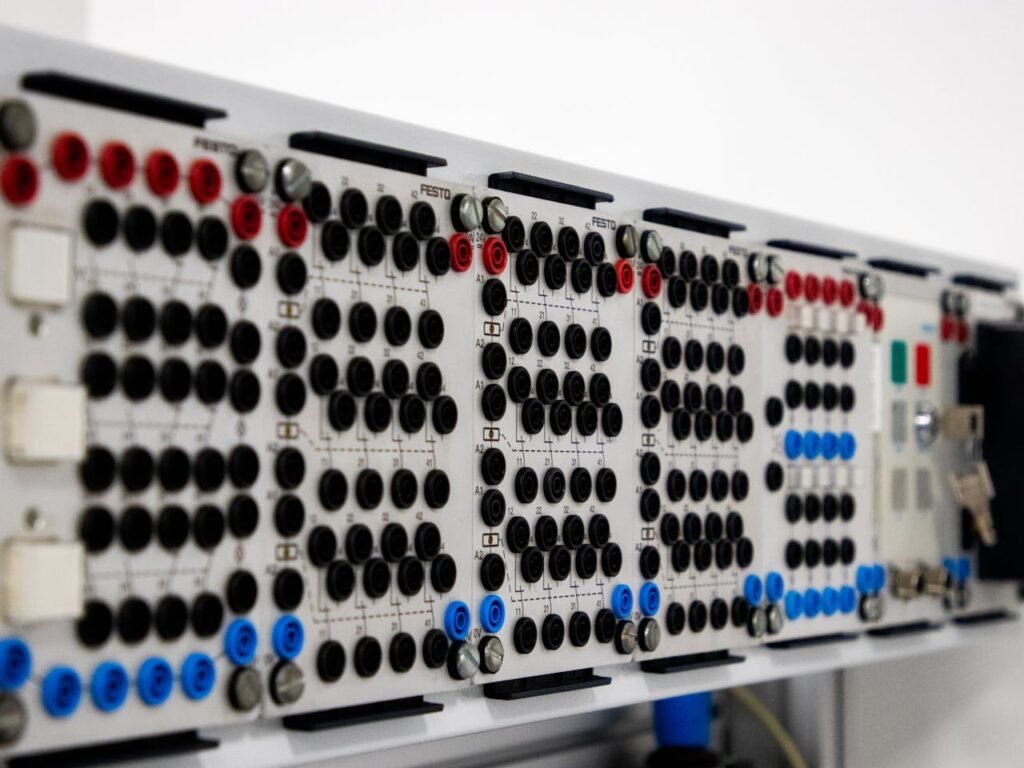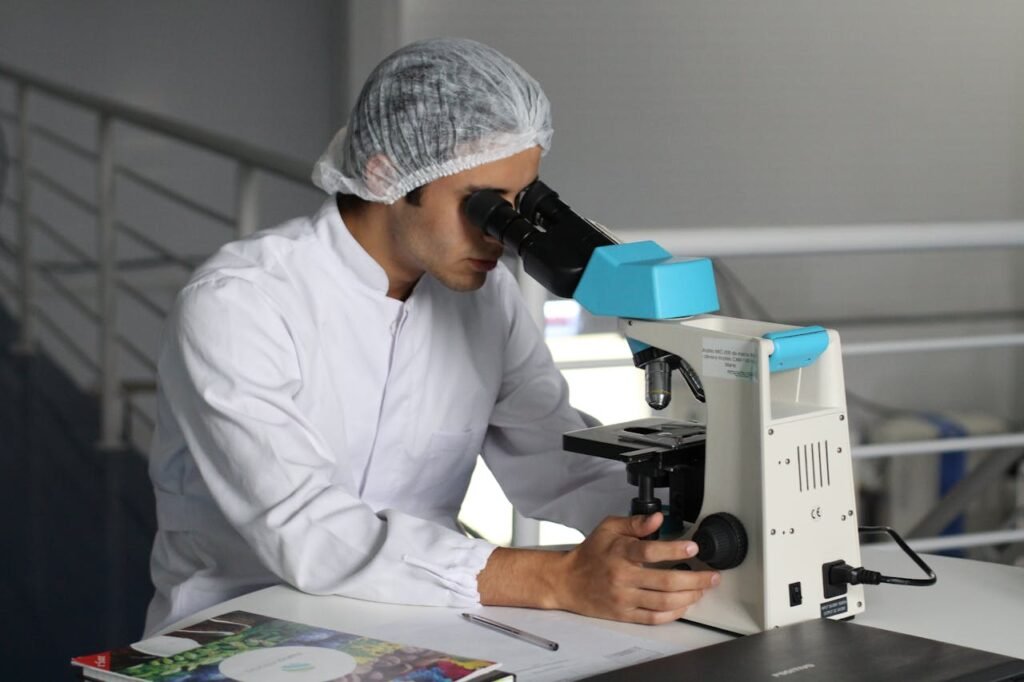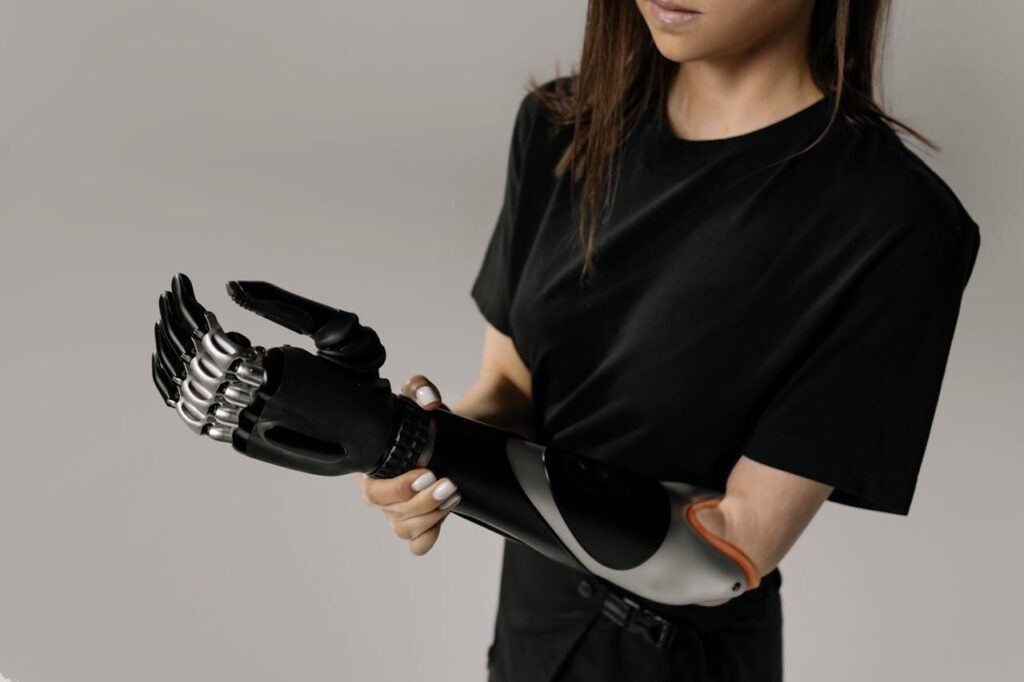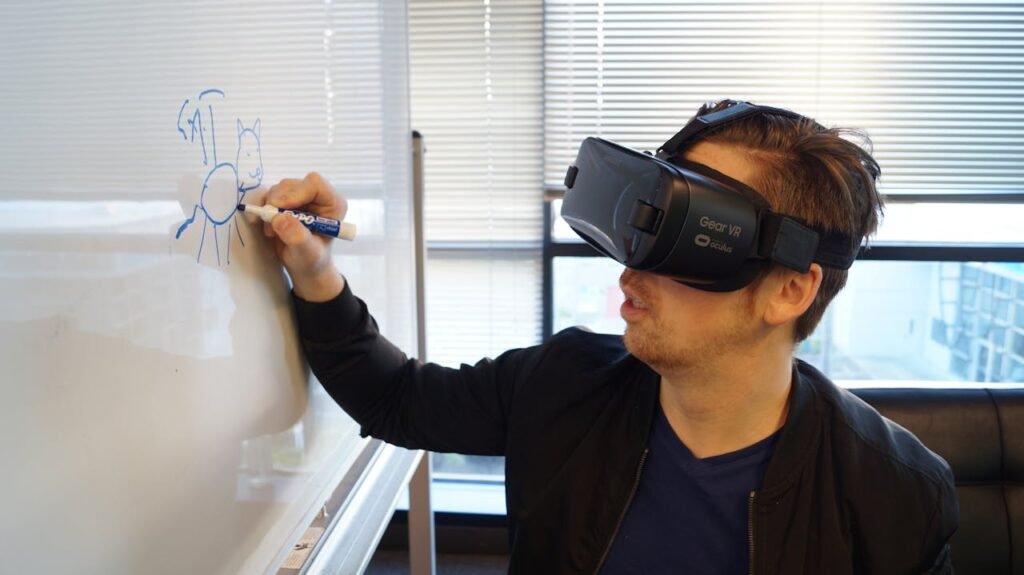Imagine a prosthetic limb that doesn’t just replace a missing part of the body but feels like it’s uniquely yours. Customizable prosthetics are turning this vision into reality. By tailoring every aspect—from fit to functionality and aesthetics—these advanced devices are transforming how individuals with limb loss regain independence and confidence.
This article delves into the world of customizable prosthetics, exploring the technologies behind them, the impact they have on users, and the opportunities they create for businesses to lead in this rapidly evolving field. Personalization isn’t just a feature—it’s the future of prosthetic care.
The Evolution of Customizable Prosthetics
Prosthetics have come a long way from their humble beginnings as basic wooden or metal replacements. Early designs, while functional, were often uncomfortable and far from resembling a natural limb.
Over time, advancements in materials, biomechanics, and engineering paved the way for more sophisticated devices. Today, customizable prosthetics represent the pinnacle of this evolution, combining cutting-edge technology with a user-first approach.
Customization is about more than aesthetics; it’s about creating a prosthetic that aligns perfectly with the user’s body, lifestyle, and aspirations.
A well-designed prosthetic doesn’t just restore physical ability—it enhances quality of life, making everyday tasks easier and fostering emotional well-being.
The Science Behind Customization
The success of customizable prosthetics lies in their ability to adapt to the unique needs of each individual. This is achieved through a combination of advanced technologies, such as 3D scanning, additive manufacturing, and modular design.
3D Scanning for Precision Fit
3D scanning technology has revolutionized how prosthetics are fitted. By capturing a detailed digital model of the user’s residual limb, 3D scanners ensure that the prosthetic socket—the part that connects to the body—fits perfectly.
This precision reduces pressure points, enhances comfort, and improves the overall functionality of the device.
For businesses, integrating 3D scanning into the fitting process streamlines production and minimizes errors, resulting in a faster turnaround and higher user satisfaction.
It also opens the door to remote fittings, where users in underserved areas can access customized prosthetics without needing to travel to specialized clinics.
Additive Manufacturing for Tailored Design
Additive manufacturing, or 3D printing, takes customization to the next level. By building prosthetic components layer by layer, this technology allows for intricate designs that were previously impossible with traditional manufacturing methods.
Users can choose features, materials, and even patterns that reflect their personality and preferences.
For instance, a child might opt for a colorful, superhero-themed arm, while an adult athlete might prioritize lightweight materials and high-performance mechanics.
Additive manufacturing enables businesses to cater to these diverse needs efficiently, reducing waste and lowering production costs.
Modular Systems for Flexibility
Modular prosthetics use interchangeable components that can be easily swapped or upgraded. This flexibility allows users to adapt their prosthetic to different activities or stages of life.
A modular arm, for example, might include a basic hand for everyday tasks and a specialized attachment for playing a musical instrument or participating in sports.
For businesses, modular design simplifies inventory management and creates opportunities for recurring revenue through component upgrades and replacements.
It also empowers users to customize their devices on an ongoing basis, enhancing their sense of ownership and satisfaction.

From Utility to Individuality
The earliest prosthetics, dating back thousands of years, were designed with one goal: basic utility. These devices, often made of wood or metal, prioritized structural support and rudimentary functionality over comfort or aesthetics.
Over time, as materials and techniques improved, prosthetics became more sophisticated, offering better mobility and durability.
The modern era of prosthetics began in the mid-20th century with the introduction of lightweight plastics and myoelectric technology.
These advancements marked a shift from purely functional devices to solutions that considered user comfort and usability. However, even these innovations were standardized, offering little room for personalization.
The Role of Technology in Driving Change
The rise of customizable prosthetics is closely tied to advancements in technology.
Breakthroughs in 3D scanning, additive manufacturing, and digital modeling have made it possible to create prosthetics that fit with unprecedented precision.
For businesses, leveraging these technologies is critical to staying competitive in a rapidly evolving market.
Digital Twin Technology
One of the most exciting developments in prosthetic customization is the use of digital twin technology. This involves creating a virtual replica of the user’s anatomy to test designs and functionalities before physical production begins.
Digital twins allow manufacturers to simulate how a prosthetic will perform in real-world conditions, reducing errors and ensuring optimal fit and functionality.
For businesses, investing in digital twin technology enhances efficiency and minimizes production costs.
By identifying potential issues early in the design process, companies can deliver high-quality prosthetics faster and with greater reliability.
AI-Powered Customization
Artificial intelligence (AI) has also revolutionized the customization process. By analyzing vast amounts of user data, AI systems can identify patterns and recommend specific design features that align with the user’s lifestyle and preferences.
For example, an AI system could suggest enhanced grip strength for users with manual-intensive jobs or recommend lightweight materials for those with active lifestyles.
Businesses that integrate AI into their design and production workflows not only improve the quality of their prosthetics but also create a more personalized user experience.
This approach builds trust and positions the company as a leader in user-centric innovation.
Shifting User Expectations
As prosthetic technology has advanced, so too have user expectations. Today’s users demand more than functionality—they seek comfort, aesthetics, and adaptability.
Customizable prosthetics address these expectations by allowing users to participate actively in the design process.
For businesses, meeting these evolving expectations requires a deep understanding of the user journey.
From initial consultations to post-fitting support, every interaction should reinforce the company’s commitment to personalization and care.
Establishing a feedback loop where users can share their experiences and suggest improvements is a valuable tool for staying aligned with their needs.
Customization as a Catalyst for Social Change
The evolution of customizable prosthetics also reflects broader societal shifts toward inclusivity and empowerment.
By offering personalized solutions, businesses contribute to breaking down stigma and fostering a sense of equality for individuals with limb loss.
Customized prosthetics go beyond restoring functionality; they enable users to express their personality and reclaim their independence.
For a child, this might mean choosing a prosthetic with their favorite colors or characters. For an adult, it could mean designing a prosthetic that matches their professional attire or athletic gear.
Strategic Insights for Businesses
For businesses aiming to lead in the customizable prosthetics market, the lessons of evolution offer actionable strategies:
Invest in Research and Development
Continuous innovation is the backbone of customization. Businesses should prioritize R&D efforts to explore new materials, manufacturing techniques, and user-centric design principles.
Collaborations with academic institutions and tech startups can accelerate these efforts, ensuring that the company stays ahead of industry trends.

Build a Multi-Disciplinary Team
Customization requires expertise in multiple fields, from biomechanics and material science to digital design and user psychology.
Building a diverse team that can approach challenges from various angles is key to developing innovative and effective prosthetic solutions.
Focus on Scalability
As demand for customizable prosthetics grows, scalability becomes a critical consideration. Businesses should invest in technologies and workflows that enable them to produce personalized devices efficiently and at scale.
This includes adopting modular design systems, automating repetitive tasks, and leveraging AI to optimize processes.
A Vision for the Future
The evolution of customizable prosthetics is far from over. Emerging technologies, such as neural interfaces and biohybrid systems, promise to push the boundaries of personalization even further.
For businesses, this presents an incredible opportunity to not only innovate but also transform lives on a global scale.
By understanding the journey from utility to individuality and embracing the technologies that make customization possible, companies can create prosthetics that redefine what’s possible.
The future of prosthetics is personal, and businesses that prioritize customization will be at the forefront of this transformative movement.
The Impact of Customization on Users
The ability to personalize a prosthetic has a profound impact on users, both physically and emotionally. A prosthetic that fits well, looks appealing, and functions seamlessly becomes more than a medical device—it becomes a part of the user’s identity.
Restoring Confidence
Customizable prosthetics allow users to express their individuality. Whether it’s through a realistic skin tone, intricate engravings, or bold colors, the design of a prosthetic can help users feel confident in social and professional settings.
This sense of pride and self-expression contributes significantly to emotional well-being.

Improving Functionality
Customization ensures that prosthetics are not only comfortable but also highly functional. A prosthetic designed for an active lifestyle, for example, can include features like enhanced grip strength, water resistance, or increased durability.
These tailored functionalities make it easier for users to pursue their hobbies, careers, and daily routines without limitations.
Enhancing Adaptability
Life is dynamic, and so are the needs of prosthetic users. Customizable designs offer the adaptability required to meet these changing demands. For a child, this might mean a prosthetic that grows with them.
For an adult, it might involve upgrades to accommodate new challenges or goals.
Opportunities for Businesses
The rise of customizable prosthetics presents immense opportunities for businesses willing to innovate and invest in this field.
By focusing on personalization, companies can differentiate themselves in the market, attract a loyal customer base, and create sustainable growth.
Expanding Product Offerings
Customizable prosthetics allow businesses to offer a wide range of options tailored to different user segments. This diversification not only increases market appeal but also creates opportunities for cross-selling and upselling.
For instance, a user who starts with a basic prosthetic may later invest in premium components or accessories.

Building Stronger Relationships
Customization fosters deeper connections between businesses and their customers. By involving users in the design process, companies demonstrate empathy and commitment to meeting their needs.
This engagement builds trust and encourages long-term loyalty.
Investing in Advanced Technologies
To lead in the customizable prosthetics market, businesses must invest in advanced technologies that enhance personalization.
This includes adopting state-of-the-art 3D printing systems, integrating AI-driven design tools, and exploring new materials for greater flexibility and durability.
AI-powered software can revolutionize the customization process by analyzing user data to recommend optimal designs and features.
For example, an AI tool could suggest specific grip configurations for users based on their daily activities or hobbies. These insights not only improve functionality but also streamline production, saving time and resources.
Additionally, experimenting with hybrid materials—such as carbon fiber composites or bio-based polymers—can open new possibilities for lightweight, high-performance prosthetics.
Offering unique material options further enhances the personalization experience and strengthens a business’s competitive edge.
Creating Accessible Customization Platforms
Accessibility is key to ensuring that customization benefits all users, not just those in urban or affluent areas. Digital platforms can play a significant role in democratizing access to personalized prosthetics.
For instance, businesses can develop user-friendly online interfaces where customers can input their preferences, upload scans, and explore design options.
Virtual reality (VR) or augmented reality (AR) tools could allow users to visualize their prosthetic in real-time, making informed decisions about aesthetics and functionality.
These platforms also reduce barriers for rural or underserved communities by enabling remote fittings and consultations. By combining digital tools with local partnerships, businesses can expand their reach while keeping customization affordable and efficient.
Customization as a Driver of Innovation
The demand for personalized prosthetics pushes businesses to innovate continuously. Every user presents a unique challenge, from anatomical differences to specific lifestyle requirements. Meeting these challenges requires a culture of creativity and collaboration.
Engaging with End Users
Involving users in the design and development process is essential for meaningful innovation. Businesses can organize focus groups, conduct surveys, or collaborate with prosthetic clinics to gather valuable insights into user needs and preferences.
For example, athletes may prioritize durability and flexibility, while children may want vibrant, playful designs. By understanding these diverse requirements, businesses can develop features that resonate deeply with their target audience.
This user-centric approach also fosters loyalty. Customers who feel heard and valued are more likely to recommend a brand to others, creating a network of satisfied advocates.
Exploring Niche Markets
Customization opens the door to niche markets that traditional prosthetics cannot easily address. These include prosthetics for athletes, musicians, or individuals with specific artistic or cultural preferences.
For example, businesses could design prosthetic hands with enhanced dexterity for pianists or lightweight arms with specialized grips for rock climbers.
These niche products not only generate revenue but also position the business as an innovator capable of solving unique problems.
The Future of Customizable Prosthetics
The future of customizable prosthetics lies in integrating emerging technologies, expanding accessibility, and pushing the boundaries of personalization.
As the industry evolves, businesses that stay ahead of these trends will play a pivotal role in shaping the next generation of prosthetic solutions.
Smart Prosthetics with Adaptive Features
The next wave of customization will likely involve smart prosthetics that adapt to the user in real-time.
Neural interfaces, for example, can make prosthetics more intuitive by enabling direct communication between the brain and the device.
AI-driven algorithms could learn and predict user behaviors, optimizing performance automatically.
For businesses, this means investing in R&D to incorporate adaptive technologies into their products. Collaborations with tech companies and research institutions can accelerate these advancements and position the business as a leader in the field.
Expanding Sustainability
As customization becomes more common, sustainability will become a critical consideration.
Businesses must explore eco-friendly materials, energy-efficient manufacturing processes, and circular economy models where old prosthetic components are recycled or repurposed.
Sustainability not only aligns with global trends but also appeals to socially conscious consumers. Highlighting eco-friendly practices in marketing campaigns can enhance a brand’s reputation and attract a wider audience.

Smart Prosthetics: The Integration of Intelligence
The integration of artificial intelligence (AI) and machine learning into customizable prosthetics is poised to revolutionize the field.
Smart prosthetics equipped with AI will be capable of learning from user behavior, adapting to individual preferences, and optimizing performance over time.
For instance, an AI-powered prosthetic leg might automatically adjust its gait and balance based on the user’s activity—whether walking on a flat surface, climbing stairs, or hiking uneven terrain.
Similarly, AI systems in prosthetic arms could refine grip strength and dexterity by analyzing repetitive patterns, improving efficiency for tasks like typing or cooking.
Neural Interfaces and Biohybrid Systems
The future of customizable prosthetics will also see increased integration with neural interfaces and biohybrid systems.
These advancements bring prosthetics closer to mimicking natural limbs by enabling direct communication with the nervous system and incorporating biological components.
Neural interfaces allow users to control their prosthetics intuitively through thought alone, offering a seamless experience that eliminates the need for external switches or commands.
Meanwhile, biohybrid systems, which merge synthetic materials with living tissue, promise to enhance comfort and responsiveness, creating prosthetics that feel like organic extensions of the body.
For businesses, entering this space requires significant R&D investment and collaborations with neuroscientists, biologists, and engineers.
Establishing partnerships with academic institutions and securing grants for exploratory projects are effective ways to gain early access to these groundbreaking technologies.
Sustainability as a Core Principle
As customizable prosthetics become more advanced, sustainability will emerge as a critical focus area. The production of prosthetic components, particularly through advanced manufacturing techniques like 3D printing, must align with environmentally responsible practices.
Eco-friendly materials, such as biodegradable plastics or recycled composites, will play a pivotal role in reducing the environmental footprint of prosthetics.
Additionally, circular economy models—where prosthetic parts are refurbished or repurposed rather than discarded—will gain traction.
Businesses can lead this shift by prioritizing sustainable sourcing and integrating lifecycle analysis into their production processes.
Highlighting these efforts in marketing campaigns not only enhances brand reputation but also appeals to the growing segment of socially conscious consumers.
Personalization Through Augmented Reality
Augmented reality (AR) is set to redefine the way users interact with customizable prosthetics. AR tools can provide a virtual platform for users to visualize and configure their prosthetics in real-time, selecting features, colors, and designs with ease.
For example, an AR app could allow a user to project a 3D model of their prosthetic onto their body, making adjustments until the design feels perfect.
This level of engagement not only streamlines the customization process but also fosters a sense of ownership and excitement among users.

Expanding Global Accessibility
While technological advancements are critical, ensuring that customizable prosthetics are accessible to a global audience is equally important.
The future of prosthetics hinges on affordability, availability, and inclusivity, particularly for underserved communities.
Local manufacturing hubs equipped with scalable 3D printing technologies can bring customizable prosthetics to regions where access has traditionally been limited.
Combining these efforts with telehealth services and remote fitting consultations ensures that users in rural or economically disadvantaged areas can benefit from the latest innovations.
Emotional and Social Connectivity
The future of customizable prosthetics is also about enhancing emotional and social experiences for users.
Prosthetics will increasingly integrate features that enable users to connect with their environment and others on a deeper level.
For instance, sensory feedback systems—powered by haptics and neural integration—will allow users to feel textures, temperatures, and pressure through their prosthetics.
This sensory connectivity helps users engage more naturally with their surroundings, breaking down barriers and fostering inclusivity.
Conclusion
Customizable prosthetics are transforming the prosthetics industry, offering users the ability to tailor their devices to their unique needs and lifestyles.
This shift from standardization to personalization empowers individuals with limb loss, restoring not only functionality but also a sense of identity and confidence.
For businesses, the rise of customizable prosthetics presents an unparalleled opportunity to lead in innovation, build deeper relationships with users, and expand into new markets.
By embracing advanced technologies, prioritizing user engagement, and committing to accessibility, companies can create life-changing solutions that set new standards in prosthetic care.



